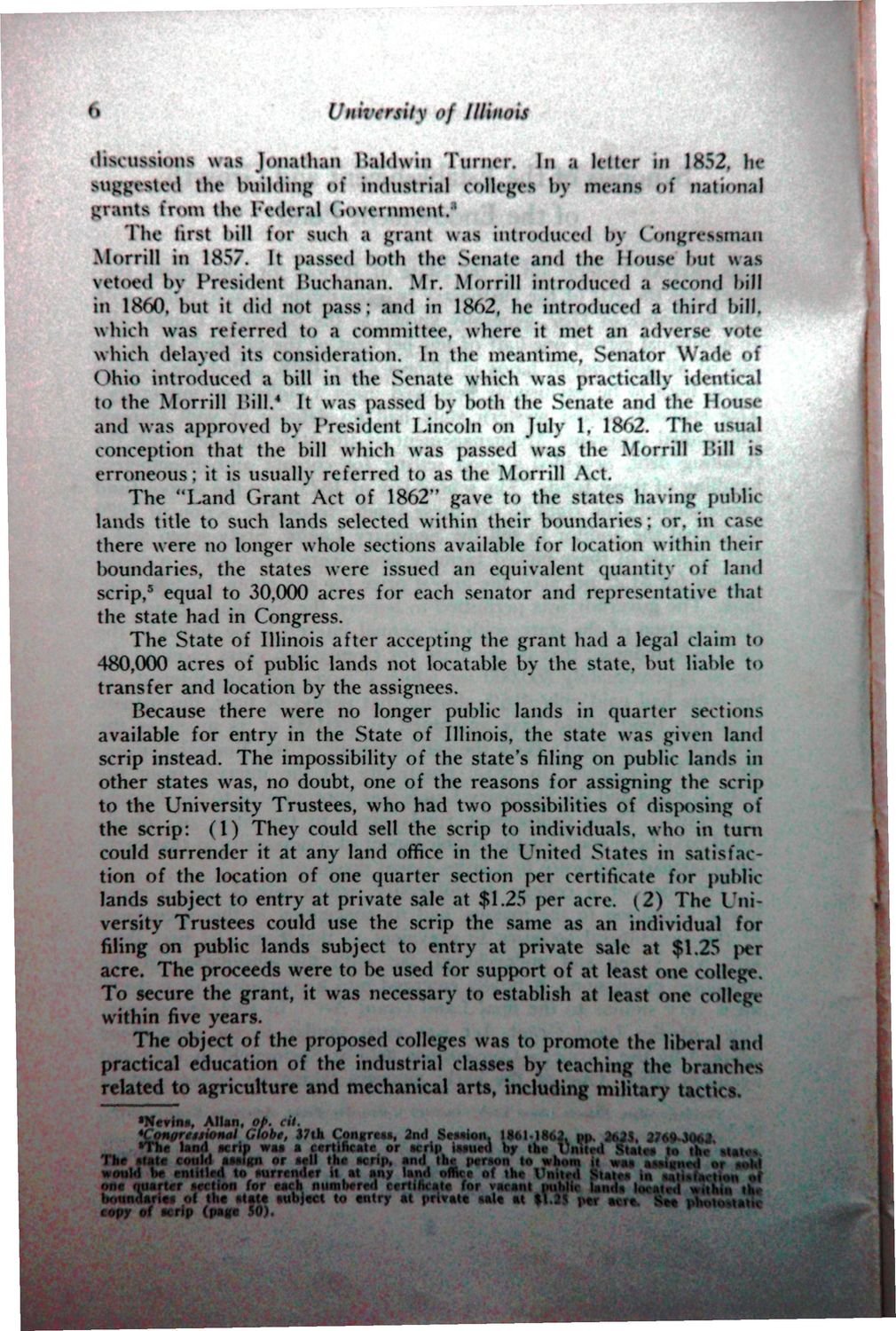| |
| |
Caption: Book - History of Illinois Land Grant Endowment
This is a reduced-resolution page image for fast online browsing.

EXTRACTED TEXT FROM PAGE:
fi University of Illinois discussions was Jonathan llaldwin Turner. In a letter in 1X52, he suggested the building of industrial colleges by means of national 1 giants from the Federal (iovernment. ^ The first bill for such a grant was introduced by Congressman Morrill in 1857. It passed both the Senate and the House but was vetoed bv President Huchanan. Mr. Morrill introduced a second bill in 1860. but it did not pass; and in 1862, he introduced a third bill, which was referred to a committee, where it met an adverse vote which delayed its consideration. In the meantime. Senator Wade <>\ Ohio introduced a bill in the Senate which was practically identical 4 to the Morrill Hill. It was passed by both the Senate and the House and was approved by President Lincoln on July 1, 1862. The usual conception that the bill which was passed was the Morrill Hill is erroneous; it is usually referred to as the Morrill Act. The "Land Grant Act of 1862" gave to the states having public lands title to such lands selected within their boundaries; or. in casethere were no longer whole sections available for location within their boundaries, the states were issued an equivalent quantity of land 5 scrip, equal to 30,000 acres for each senator and representative that the state had in Congress. The State of Illinois after accepting the grant had a legal claim to 480,000 acres of public lands not locatable by the state, but liable to transfer and location by the assignees. Because there were no longer public lands in quarter sections available for entry in the State of Illinois, the state was given land scrip instead. The impossibility of the state's filing on public lands in other states was, no doubt, one of the reasons for assigning the scrip to the University Trustees, who had two possibilities of disposing of the scrip: (1) They could sell the scrip to individuals, who in turn could surrender it at any land office in the United States in satisfaction of the location of one quarter section per certificate for public lands subject to entry at private sale at $1.25 per acre. (2) The University Trustees could use the scrip the same as an individual for filing on public lands subject to entry at private sale at $1.25 per acre. The proceeds were to be used for support of at least one college. To secure the grant, it was necessary to establish at least one college within five years. The object of the proposed colleges was to promote the liberal and practical education of the industrial classes by teaching the branches related to agriculture and mechanical arts, including military tactics. •Nevina, Allan, op. cti. *Congrsssionol Globs, Vtk Congress, 2nd Stasia*. 11*10842. pa, 2*25, ITfll l i i l •The land i c r i j i was a cert, ate or scrip United by tht United Statat l a ft¥t The mat* could assign <>i .11 the scrip, and the person to whom it was a a a C m i Ul M O I I M he • untied to Surrender it at *ny land office of the ! ' n i i , . l State-* >it aaXsVtft on miarter sat-1 inn for tach numbered certificate for vacant pithtti I,.„U Im-ated » i t h i u the boundartr • i the .tats sulijatt to tntry at pftvatt sals at $1 per av pht>t»«tattt eapy of scrip (paj<e 50). —^^» ^ • * • * * *
| |